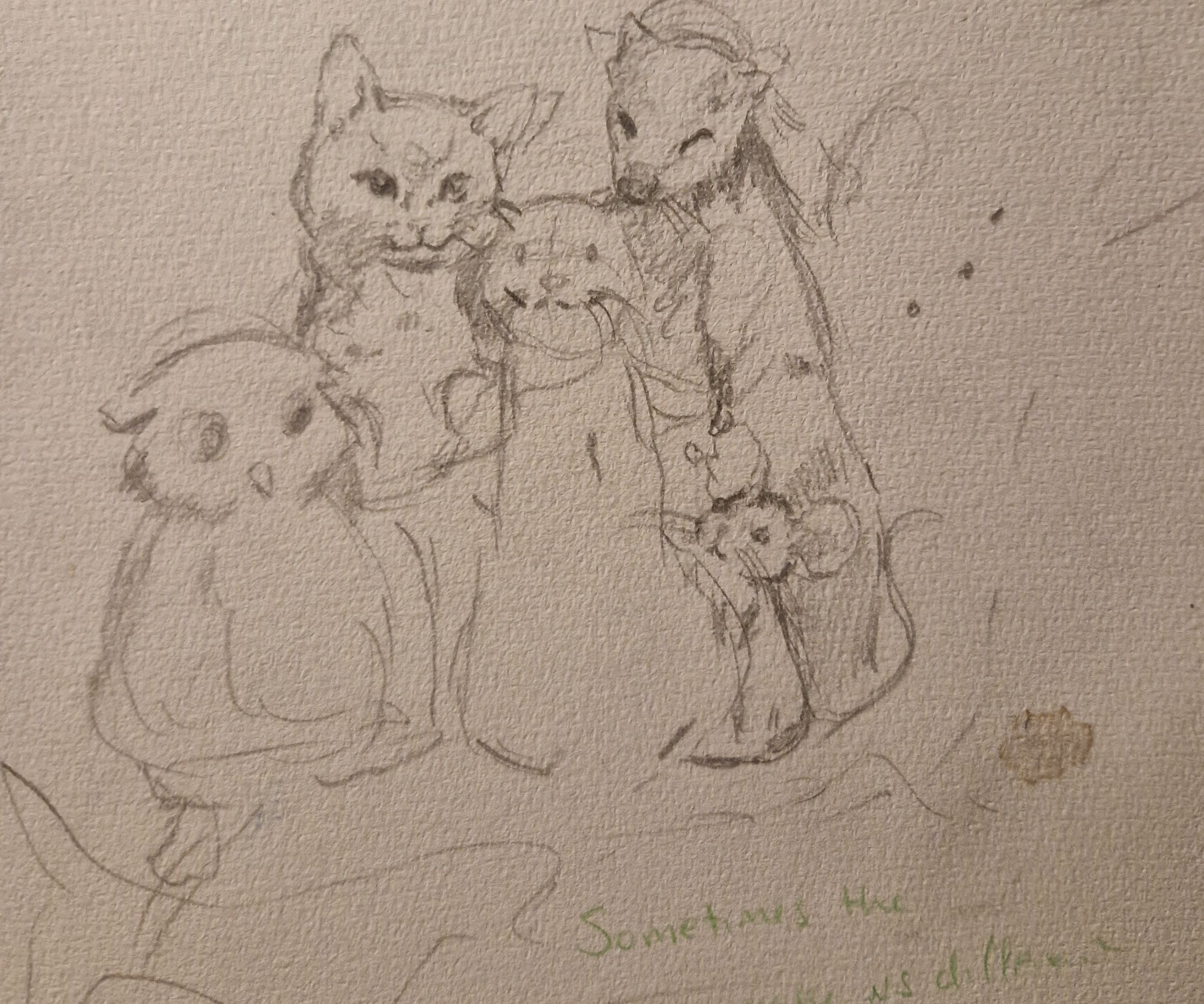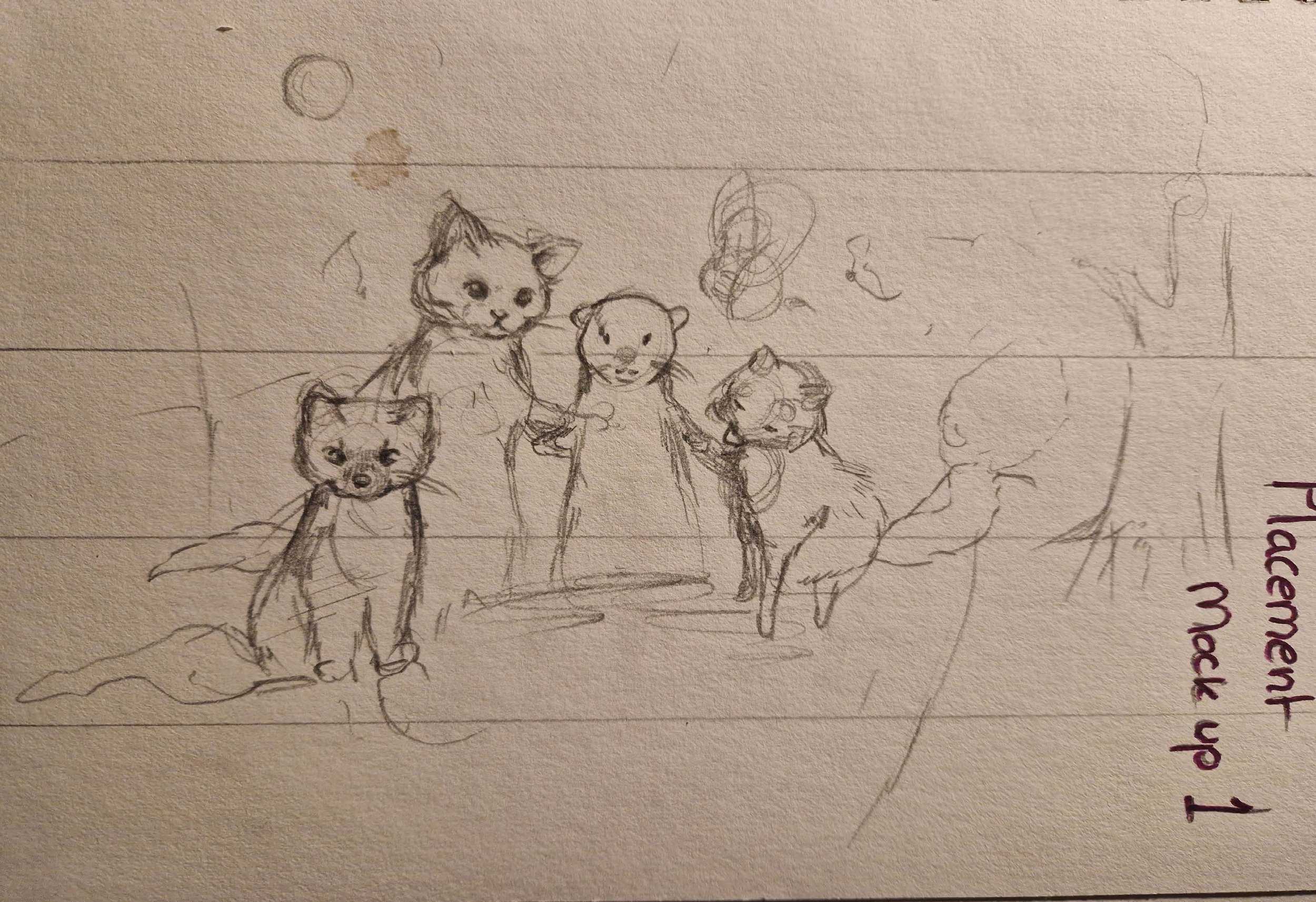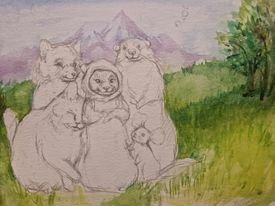Self analysis on 'Autism Awareness'- live Brief
Duration of project: 4 weeks
Project Overview- Time Management
Artwork Research duration: 2 weeks
Primary data: 2 Weeks
Collected data from surveys: 1 month
Brief
There are many issues in helping children get their assessment for autism, meaning that pupils in need of acknowledgement are unable to receive the correct academic support and in term suffer and are unable to achieve their full potential. A lot of autistic people find employment exceedingly difficult and troubling. Despite many not being able to work in crowded or social environments, many are remarkably successful with independent work and have helped revolutionize technology and art. People such as Satoshi Tajiri (creator of Pokémon) or Albert Einstein. 70% of autistic people suffer from mental health problems, and finding therapists that specialize in this is extremely limited and far in between. The main idea to consider when producing this project is to make sure autistic people are seen not as unfunctional members of society or people with a disability. The goal is to educate those who are ignorant and harbour such an idealism.
The Rainbow infinity loop may be considered a better representation rather than the colourful puzzle piece for autism. A lot of these charities are geared towards autism being considered a ‘tragedy’ when the answer to is that society must make room for understanding rather than ‘curing’ them. For example, in the past false information has said that the vaccine is the cause’ of autism. The campaigns should be geared towards neurodiversity, luckily, many are starting to make those changes.
The National Autistic Society were the first to design the ‘puzzle piece’ logo for autism which is considered controversial. Gerald Gasson was the one who designed the puzzle piece to have a child crying inside of it, which is meant to be ‘a child suffering from a puzzling condition.’ Although they have made a lot of changes since their organization started in the 60s. They made sure to make use of ‘first language’ in their campaign. The society had gotten rid of the puzzle piece logo due to this backlash. Many have wanted to change the logo to images of Butterflies, with the meaning of evaluation into a beautiful creature, or some have suggested that mice would be a great symbol. Since mice have been seen to have similar neurological aspects and social relationships.
My Aim, Responsibility and Problem to Solve
To create a piece that portrays the fundamentals of social acceptance using child-like innocence with a calm, enchanting and with a fantasy story book arch type. By doing this it is a type of tribute as to where difficulties with social aspects first come into play for many autistic people.
Making this project appeal to all ages is my aim, despite the child-book style an appreciation for the art, attention to detail, humanness, and calmness of water colour pieces is the direction I would want to turn this project towards. Purposefully leaving tiny representations for people to have fun analysing if they wish or just to enjoying the imagery as a sweet, comforting, and funny piece to look at.
My responsibility within this project is to convey a message in the form of a poster that can easily be identified as a campaign towards Autism Acceptance Month. Something that could entice the bystander to research more into the cause.
Demographic
The poster is designed to be placed in a university/college area, surrounded by many age groups ranging (for all genders) from 16 to 25. This demographic is effective in influencing good prospects for the community, as they are the future voters. The poster's aim is to encourage and interest pupils to research further into this matter. Hopefully feeling sympathy towards the issue and resulting in them feeling compelled to vote. Indirectly making political changes, as the statistics for UK voters born in 2001 upwards is low, falling at a 20% difference from the other age groups.
The poster also allows anyone who would already been educated on Autism or would have a friend or loved one who is Autistic. Which gives the design more leeway on making it more detailed helping to reference or suggested help or other issues on the matter.
UK votes from 1918-2019
Environmental Responsibility
The design of this poster holds a purpose and responsibility to unite a community of people who are Autistic, as well as encourage and translate a call for action towards people who are not, to seek out a better understanding of the condition and create acceptance within the community.
Our responsibility as graphic designers means we should take great consideration in the materials used to print and create our products, in this case, the poster. Preferring that the physical copies were reduced to only a few big prints used on the streets to catch by passers' attention as efficiently as possible. Or for the poster to be used within areas that are educational institutions or places that youth would gather e.g., schools, clubs, universities etc.
Making sure that the prints are only created using FSC-certified recycled materials or even bamboo paper to lower the CO2 emissions created during the production process. The inks used on the physical copies should be soy-based. As cost effective as it is, it also brings out the vibrant colours of the design, as well as releasing fewer toxins into the atmosphere during the evaporation process.
An environmentally friendly way to laminate the poster so it can withstand any weather conditions and prolong the Gevity of the advertisement is to use materials such as Cello green, Polylactic acid, oxo-bio gradable plastics. Generally, keeping the design on digital platforms to spread awareness is best within this case, since it can reach larger audiences and can be shared to those who would use or need it.
Survey
I went into the town Centre of Nottingham to ask the public if they would partake in a quick survey surrounding our society’s view on Autism.
For Q1, 15 participants said yes, and 12 said no. I conducted this survey in person asking people face to face and reading out questions. This may have affected the results as people could have felt pressured to answer in a certain way.
For Q2, many people felt that there was not enough support for Autistic people and agreed that more funding needs to be put in place.
For Q3, Autistic and non-autistic people answered this one despite the wording of the question, saying they either feel like the attitude and language should change or would want a better understanding of how to address someone who is autistic.
For Q4, 14 had said no, and only 1 had said yes, whilst the other 12 could not answer. This means that it is more of a society-based issue and needs to be brought to light more in today’s age.
For Q5, all 27 people had said yes, meaning there is a public understanding that there is an issue about this topic, but are not sure how to approach the matter.
For Q6, 19 said yes that they would vote for change, and the other 8 said no.
The Results of my Survey
My Mood Board
Inspirations Taken Along Side Notes
Character Studies and Drafts
Character Studies
Character Design
Positioning Draft
Mock Up
Mock Up
The Design with a Painted Background
The Water Colour Painting Completed
The Final Design Edited and Colour Corrected On Photoshop
Design feedback
When I shared the poster on Facebook, Autism society pages ended up sharing it onto their own page and providing me with positive feedback to the design. Many from my social media platform enjoyed the post as well. I feel that I could have done better in presenting the text used, the body of the text ended up being faded into the busy background. The way that I scanned the image could have also been of better quality despite editing it on Photoshop, the shadows where I had taken the image affected the final outcome. Also, the technique used within the painting was not as reformed as I had hoped it to be, meaning I wish I could have given it a noticeably clear commercial presence, as humbling as it may present now. In future I would want to paint images that invoke a human emotional response, keeping the image as clear as possible, although I will work with traditional mediums again. As this does give the overall design an authentic feel that cannot be replicated by design software.
I tried to manipulate light using the natural flow of watercolours, and how the paint brush could cut off certain areas for that effect. Overall, learning more about light refraction and how to utilize it would create a more fantasy, soft feel to the painting. There are many more effects that I could have used to my advantage when combining the two mediums together, for example I could have used under tone layers on photoshop to deepen the environment where the animals were placed.
The facial expressions and body language modelled on the creatures could have been better if drawn from better references, even human references for that matter. They were more rigid than what I intended to form. Overall, I’m happy with the sweet communal feel the characters had given the poster.
Autism Awareness Campaign, by Ideology, 2020
The poster above is a good execution of expressing child like wonder in a campaign for autism. The poster also offers some insight into some traits that autistic people may have. I could have integrated more information, like these designers had done, into my poster. Possibly illustrating autistic characteristics within the animal drawings, to normalise these actions and to help better inform the public. Hopefully helping to create a society that is more considerate when seeing an autistic person express those traits.
References
“Autism Acceptance Month.” Inclusive Employers, www.inclusiveemployers.co.uk/awareness-day/autism-acceptance-month/. Accessed 5 Apr. 2024.
BA, Claire Delano. “Autism Acceptance vs Awareness: Is There a Difference?” Autism Parenting Magazine, 14 June 2021, www.autismparentingmagazine.com/autism-acceptance-vs-autism-awareness/#:~:text=A%3A%20Autism%20acceptance%20goes%20beyond. Accessed 5 Apr. 2024.
Crosman, Cassandra. “Good Autistic Advocacy Organizations vs. Bad Autism “Charities.”” In the Loop about Neurodiversity, In the Loop About Neurodiversity, 28 Nov. 2019, intheloopaboutneurodiversity.wordpress.com/2019/11/28/good-autistic-advocacy-organizations-vs-bad-autism-charities/.
Free Textures and Tutorials for Photoshop and More! texturelabs.org/.
How Satoshi Tajiri, a Game Designer with Autism, Created an International Phenomenon - AmeriDisability. 24 Oct. 2018, www.ameridisability.com/satoshi-tajiri-how-a-little-known-game-designer-used-his-autism-to-create-an-international-phenomenon/#:~:text=DesignArtistsSpotlight-. Accessed 5 Apr. 2024.
“Naoki Higashida.” Wretches & Jabberers, www.wretchesandjabberers.org/bios/naoki-higashida/.
“Rayleigh Scattering - an Overview | ScienceDirect Topics.” Www.sciencedirect.com, www.sciencedirect.com/topics/medicine-and-dentistry/rayleigh-scattering#:~:text=Rayleigh%20scattering%20refers%20to%20the.
Rodden, Janice. “What Does Autism Spectrum Disorder Look like in Adults?” ADDitude, ADDitude, 14 Feb. 2017, www.additudemag.com/autism-spectrum-disorder-in-adults/.
Uberoi, Elise. Turnout at Elections Summary 1 National Parliament Elections 2 Devolved Administrations 3 Local Elections 4 European Parliament Elections 5 Appendix. 10 Jan. 2023.
“World Autism Acceptance Week 2024.” Www.autism.org.uk, www.autism.org.uk/get-involved/raise-money/world-autism-acceptance-week-2024.














